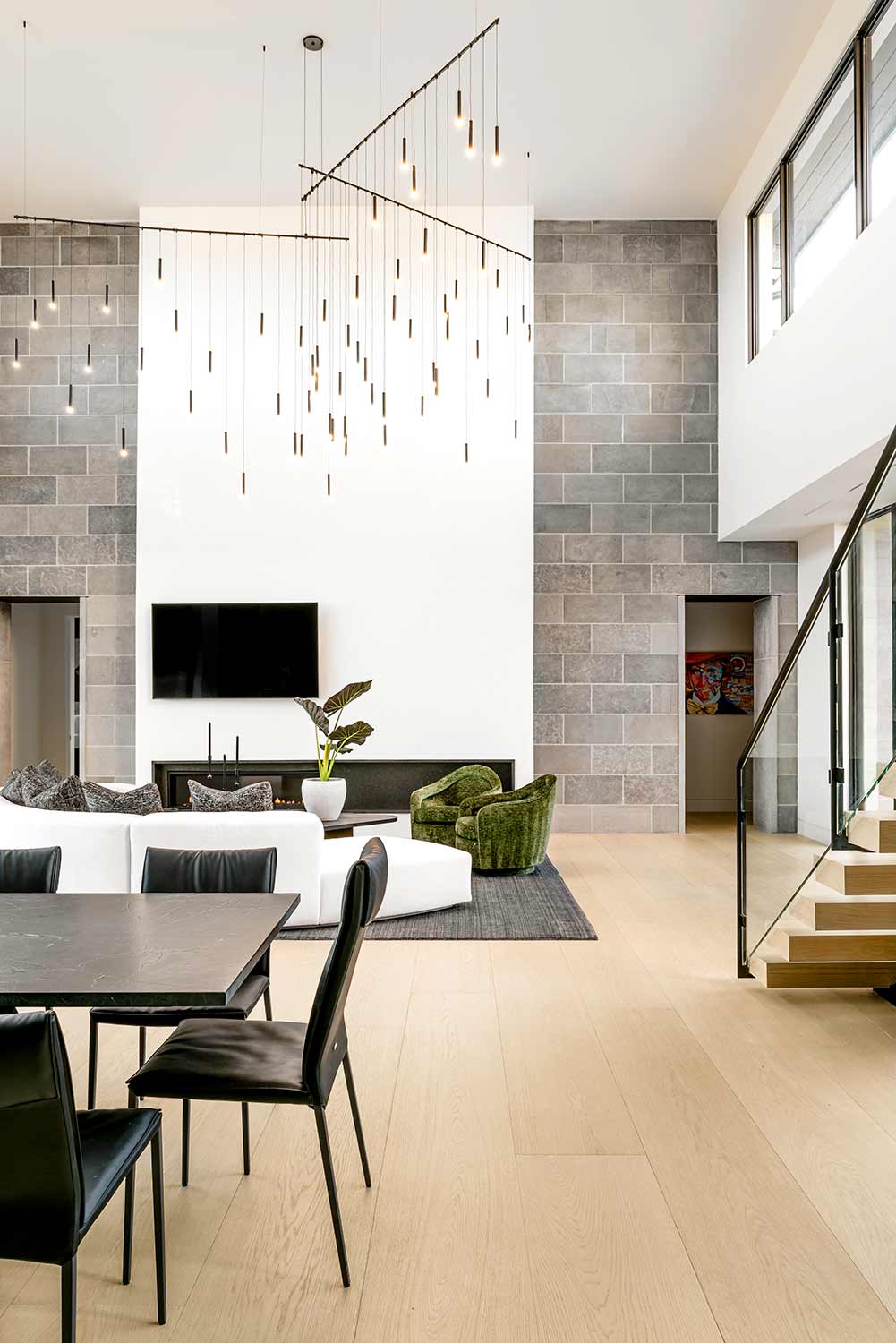
Contemporary home design has become a captivating and influential movement in modern architecture and interior design. It represents a fresh and innovative approach to creating living spaces that reflect the essence of modern living. In this article, we will explore the key principles, elements, and notable architectural styles associated with contemporary home design, highlighting its significance in redefining our living spaces.
creating living spaces that reflect the essence of modern living
Key Principles of Contemporary Home Design
Contemporary home design is characterized by several key principles that define its unique aesthetic and functionality.
Minimalism and Simplicity
Clean lines, geometric shapes, and a minimalist approach define contemporary design. The focus is on creating a sense of simplicity and clarity, where each element has a purpose and contributes to the overall composition. Clutter is eliminated, allowing the space to breathe and promoting a sense of tranquility.
Integration of Indoor and Outdoor Spaces
Contemporary homes embrace the seamless integration of indoor and outdoor areas. By blurring the boundaries between the two, homeowners can enjoy a harmonious connection with nature. Take look at our luxurious and unique Iron Bluff design; notice Large windows, sliding doors, and open floor plans facilitate the flow of natural light and provide unobstructed views, creating a sense of expansiveness.
Abundant Natural Light
Natural light is a crucial element in contemporary home design. Strategic placement of windows, skylights, and light wells allow sunlight to penetrate deep into the interior, illuminating the space and creating a vibrant atmosphere. Light in our Modern Contemporary design becomes an architectural feature that enhances the overall design and promotes a sense of well-being.
Sustainable and Eco-Friendly Solutions
Contemporary home design places a strong emphasis on sustainability and eco-friendliness. Designers and architects incorporate environmentally friendly materials, such as recycled or renewable resources, and prioritize energy-efficient systems and practices. This approach not only minimizes the environmental impact but also contributes to healthier and more efficient living environments.
Technology Integration
Technology plays a vital role in contemporary home design, enhancing convenience, efficiency, and comfort. Smart home automation systems allow homeowners to control various aspects of their living spaces, including lighting, temperature, security, and entertainment, from their smartphones or tablets. Innovations in home technology are seamlessly integrated into the design, creating a modern and connected living experience.
Elements of Contemporary Home Design
To achieve the distinctive contemporary aesthetic, several elements are carefully considered and incorporated into the design process.
Materials and Textures
Contemporary home design embraces modern and innovative materials, creating visually striking and durable spaces. The focus is on using materials with clean lines, smooth surfaces, and a minimalist appeal. Concrete, glass, steel, and natural materials like wood and stone are often utilized to provide a sense of texture and contrast.
Color Palette and Finishes
Neutral color palettes dominate contemporary home design, acting as a canvas for other design elements to shine. Shades of white, beige, gray, and black create a clean and sophisticated backdrop, while bold accents in vibrant hues add pops of color and visual interest. Matte and sleek finishes are preferred, contributing to the overall modern and refined aesthetic.
Open Floor Plans
Contemporary homes often feature open floor plans that promote a sense of spaciousness and flexibility. Walls are minimized to allow for fluid movement between different areas, creating a seamless flow and facilitating social interactions. Multifunctional spaces serve diverse purposes, adapting to the changing needs and lifestyles of the occupants.
Statement Pieces and Artwork
Unique and impactful elements are carefully selected to serve as focal points within contemporary spaces. Statement pieces, such as sculptural furniture, eye-catching light fixtures, or artistic installations, add personality and visual appeal. Artwork is also an integral part of contemporary design, reflecting the homeowner’s taste and creating a curated environment.
Sustainable Design Practices
Contemporary home design prioritizes sustainable practices to create environmentally responsible living spaces. Energy-efficient appliances and systems, such as LED lighting, smart thermostats, and solar panels, reduce energy consumption and lower the carbon footprint of the home. Additionally, designers integrate renewable energy sources, like geothermal heating and cooling or rainwater harvesting systems, to further enhance sustainability.
Notable Contemporary Architectural Styles
Contemporary home design encompasses various architectural styles that have emerged and evolved over time. Three notable styles are Modernist Architecture, Postmodernist Architecture, and Contemporary Vernacular Architecture.
Modernist Architecture
Modernist Architecture originated in the early 20th century and is characterized by its emphasis on functionality, simplicity, and the use of industrial materials. Influential modernist architects, such as Ludwig Mies van der Rohe, Le Corbusier, and Frank Lloyd Wright, pioneered this style and left a lasting impact on contemporary design.
Postmodernist Architecture
Postmodernist Architecture emerged as a reaction to the strict principles of modernism. It celebrates eclecticism, incorporates historical references, and often showcases bold and unconventional forms. Iconic postmodernist buildings, such as the Guggenheim Museum Bilbao and the Walt Disney Concert Hall, have become architectural landmarks.
Contemporary Vernacular Architecture
Contemporary Vernacular Architecture focuses on embracing local context, culture, and materials while incorporating contemporary design principles. It celebrates regional identity and traditions, offering a unique blend of the past and the present. Examples of contemporary vernacular designs can be found worldwide, showcasing the diversity and adaptability of contemporary architecture.
Conclusion
Contemporary home design represents an exciting and transformative approach to modern living. By embracing minimalism, integrating indoor and outdoor spaces, harnessing natural light, prioritizing sustainability, and incorporating cutting-edge technology, contemporary homes create harmonious and forward-thinking environments. The elements and principles of contemporary design enable homeowners to personalize their spaces while promoting adaptability to their changing needs and lifestyles. We have award-winning designs in our Portfolio, contact us to build your dream contemporary home today!


